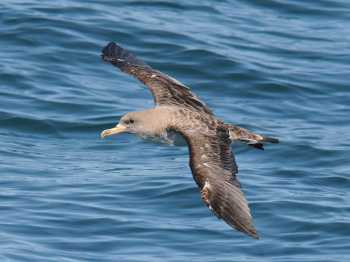Matthieu Authier (Centre d'Écologie Fonctionelle et Évolutive, Montpellier, France) and colleagues have published in the journal Methods in Ecology and Evolution on how to assess the effects of instrumentation on Scopoli’s Shearwaters Calonectris diomedea.
The paper’s summary follows:
1. “Biologging has improved ecological knowledge on an increasing number of species for more than 2 decades. Most studies looking at the incidence of tags on behavioural, physiological or demographic parameters rely on ‘control’ individuals chosen randomly within the population, assuming that they will be comparable with equipped individuals. This assumption is usually untestable and untenable since biologging studies are more observational than experimental, and often involve small sample sizes. Notably, background characteristics of wild animals are, most of the time, unknown. Consequently, investigating any causal effect of instrumentation is a difficult task, subjected to hidden biases.
2. We describe the counterfactual model to causal inference which was implicit in early biologging studies. We adopted methods developed in social and political sciences to construct a posteriori an appropriate control group. Using biologging data collected on Scopoli's shearwaters (Calonectris diomedea) from a small Mediterranean island, we used this method to achieve objective causal inference on the effect of instrumentation on breeding performance and divorce.
3. Our method revealed that the sample of instrumented birds was nonrandom. After identification of a relevant control group, we found no carry-over effects of instrumentation on breeding performance (taking into account imperfect detection probability) or divorce rate in Scopoli's shearwaters.
4. Randomly chosen control groups can be both counterproductive and ethically dubious via unnecessary additional disturbance of populations. The counterfactual approach, which can correct for selection bias, has wide applicability to biologging within long-term studies.”

Cory's/Scopoli's Shearwater off South Africa, photographed by John Graham
Reference:
Authier, M., Péron, C., Mante, A., Vidal,P. & Grémillet, D. 2013. Designing observational biologging studies to assess the causal effect of instrumentation. Methods in Ecology and Evolution 4: 802-810.
John Cooper, ACAP Information Officer, 24 October 2013

 English
English  Français
Français  Español
Español